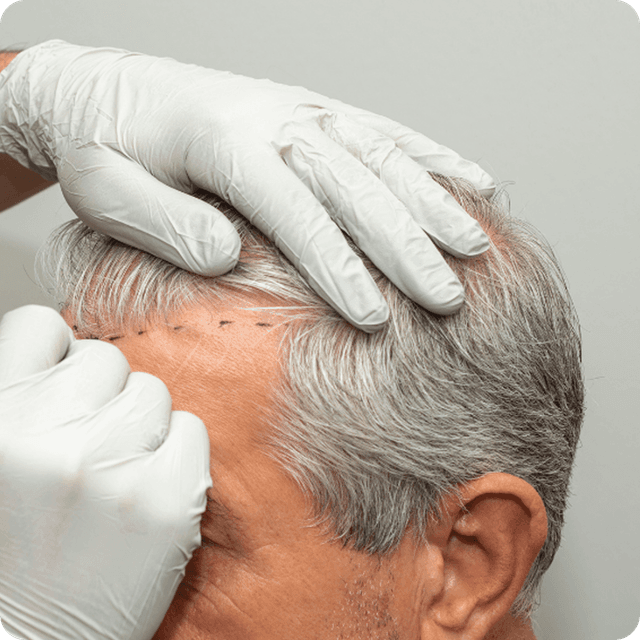
A previous transplant that has gone wrong can leave you with more than just cosmetic concerns—it can impact confidence, scalp health, and trust in the process. Whether it’s a botched hairline, patchy density, misdirected grafts, or visible scarring, corrective hair transplant aims to set things right.At KIBO, we approach corrective transplant with surgical precision and empathy. It is not just about adding grafts—it is about unlearning the effect of past errors, redesigning outcomes, and restoring balance. Every case is unique. So is our strategy.
Corrective hair transplant is a specialised surgical process designed to repair poorly executed hair restoration procedure. Common issues include uneven or pluggy grafts from outdated technique, harsh or unnatural hairline, poor graft direction or scarring in the recipient zone and sparse, patchy results with low density from previous transplant.
Kibo combines trichology, facial aesthetics, and real-time graft planning to achieve refined outcomes even in complex cases.

You may be a candidate if:

Advantages of Corrective Hair Transplant procedure include:
Strategic placement of grafts help in fixing visible signs of past surgery
Redesigning the hairline can give even coverage over the scalp
Correction can hide or soften visible FUT scars or any pitting from previous surgery.
Helps to restore confidence after previous disappointment.
 Step 1
Step 1Local anesthesia is used to block the pain sensation over the scalp or any other body site that is operated during hair transplantation.
 Step 2
Step 2New grafts are extracted strategically from the donor area according to the indication.
 Step 3
Step 3Slit making is the process where a surgeon makes spaces in the site where grafts need to be implanted. Existing scars may be revised or camouflaged and slits are made in between existing hair for better refinement.
 Step 4
Step 4Implantation is the process of placing the grafts in the pre-formed pockets as planned by the surgeon. This step is passive as compared to other steps and can be done by trained staff.
Correcting a botched transplant isn’t easy — it takes more than technical skills. It demands artistry, experience, and empathy.

At Kibo, we specialize in corrective procedures because we believe everyone deserves to feel good about their reflection.
Here’s how we make it right:
Kibo also provides comprehensive aftercare support to ensure the best possible outcome.

Corrective hair transplant is far more nuanced than standard procedure. Every case is different, and so is the effort involved. That’s why pricing depends on: The number of grafts that need to be removed, added, or redistributed, the extent of damage caused by the previous transplant, whether beard or body donor hair needs to be used, or any additional scar revision techniques and ongoing recovery support.
At Kibo, we maintain complete transparency in pricing. No hidden costs, no surprise bills. After a thorough consultation, you will get a clear, personalised estimate as per your requirement.
YOUR HAIR JOURNEY STARTS HERE